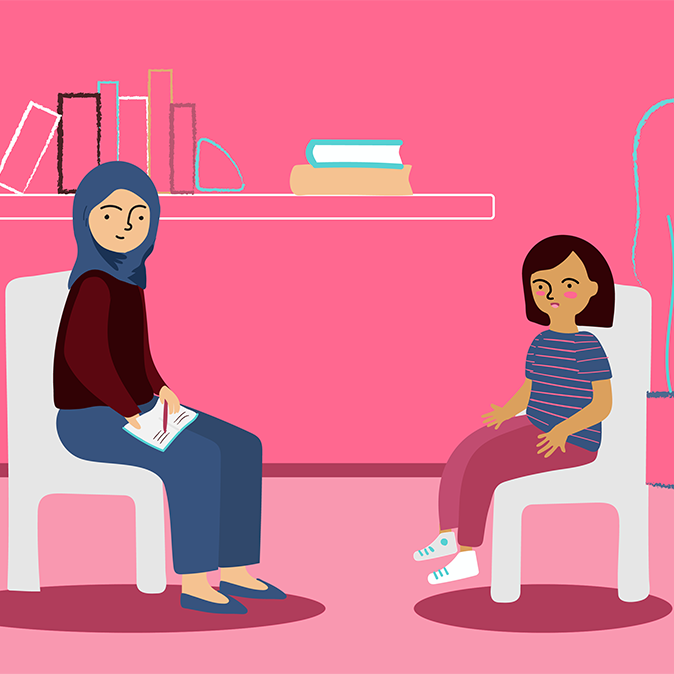Parenting
Five Ways You Can Teach Your Child Empathy
Teaching your child how to be empathetic doesn’t need to be complex.
To fully perceive what someone else is experiencing, you need to be able to empathize with them. You have to put yourself in their shoes and visualize how they’re feeling. By doing this, you let them know they’re not alone and you are their witness: you understand what they’re going through.
Empathy is one of the most important skills you can teach a child. Not only will this make them better people and help create an inclusive space for children of all abilities, but it’ll also help them become emotionally aware and let them build meaningful relationships. They’ll also expand their perspective because they’ll be able to examine a situation through someone else’s eyes.
Teaching your child how to be empathetic doesn’t need to be an elaborate exercise. Simple tricks and tweaks can really help. Here’s how you can inculcate empathy in your children:
Set a good example
It’s not effective enough if you simply tell your child to do something. A better strategy? Show your child what you want them to do. Leading by example is one of the best ways to help your child learn something new.
If you want your child to be more empathetic, you should teach them what empathy looks like through your words and actions. For example, if you’re at the park and one of the kids gets hurt, you can say something like, “That must be really difficult to bear. I’m sorry you’re hurt. I also always found these cuts and bruises painful when I was your age. What can I do to ease your pain?”
If your child sees you empathizing with other people, they’re more likely to remember it and emulate your behaviour instead of mocking someone or laughing at them. Remember: empathy can be taught and your child can learn to consciously embrace it in their lives.


Kids learn from and aspire to be their parents, so the best way to teach them empathy is to be empathetic yourself.
Talk to them
Cultivate a welcoming environment at home where it’s possible for everyone to talk to each other about their feelings. Your child needs to be tuned into their emotions before they can recognize someone else’s feelings and acknowledge them.
Encourage your kid to express themselves and use the right words to identify their feelings. For instance, if they’re being unusually quiet after a long day at school, ask them about it. This may require some prompting from your side. Ask questions like “Are you sad?” or say something like “I had a really bad day last week. You know what helped me? Going for a long walk and getting some fresh air.”
Encourage your kid to express themselves.
Talking is a simple but powerful tool because it’ll let your child know that it’s OK to say what they really want to say. They won’t need to bottle up their feelings when they’re dealing with negative emotions such as sadness or anger. This will also help them tackle their emotions in a healthy manner without resorting to hurtful methods such as lashing out or throwing tantrums.
You can use toys and videos to make this process easier. For example, while watching a cartoon together, if the protagonist seems upset, press pause. Ask your child about the lead character’s situation by using simple questions like “How are they feeling right now?” or “Why are they feeling this way?”
It’s essential to give your child room to appreciate and recognize certain thoughts and feelings. This will help them identify with what others are going through and allow them to relate to their situation.
Embrace age-appropriate techniques and be patient
Consider your child’s age while teaching them about empathy. If your child is younger, it’ll be helpful to use a prop such as their favourite toy to explain the concept of kindness. You could teach them to be gentle and not lash out at their toy when they’re angry or frustrated.
For an older kid, you can try a role-playing game that can make it easier for them to understand other people’s perspectives.
With teens, you can even prepare a short questionnaire after watching a movie and examine the lead character’s predicament together. You can make notes on how you felt about the protagonist’s situation and compare it with their answers.
Always be sensitive to your child’s feelings and avoid showing signs of impatience around them. If they’re feeling extremely low about something, give them a hug and reassure them. Let your child know their emotions are valued and you care about how they feel. Allow them to acknowledge their feelings instead of rushing the process.


Show your kids how empathy and kindness extends beyond human beings and teach them to be kind to animals as well.
Make empathy a habit
This shouldn’t be an occasional exercise that is implemented when a difficult situation crops up. You should practice empathy regularly at home and make it a daily occurrence in your kid’s life.
Positive actions and words can act as reinforcement and motivate your child to do better. If you see your child help someone else, compliment their act of kindness and encourage them to do it again.
Have regular discussions with your kid on the topic. For instance, if someone in your social network is going through a tough time, talk about that and say, “This isn’t an easy time for them. They’re very sad right now. How can we help them feel better?”
You can use books to introduce them to empathy as well. A good option is “Come With Me” by Holly M. McGhee that revolves around a little girl trying to contribute to the world in her own way after feeling inspired by her parents’ acts of kindness.
Promote diversity
Be mindful about introducing your child to a diverse, multicultural environment whenever possible. Being surrounded by people from varied backgrounds can really help your kid practice empathy and appreciate how different lives are led. You can even make sure they’re exposed to popular culture from other parts of the world instead of books and music from their home country.
Positive actions and words can act as reinforcement.
Empathy doesn’t have to be limited to people. It applies to animals as well. Talk about how pain is universal and animals feel pain just like we do. In a children’s book, “How to be a Lion” by Ed Vere, Leonard, a lion and his closest friend, Marianne, a duck, choose kindness and friendship over everything else when they’re forced to tackle mean bullies from the jungle. Read such stories to your child and encourage them to ask questions about the plot, the characters and their experiences. Urge them to think about what they’ve learned from the storytelling session.
Promoting empathy and raising a considerate child isn’t impossible. It requires a bit of mindfulness, a loving environment, regular practice and great role-models. Do not underestimate the power of words and encourage your child to choose their words wisely whenever they talk about someone. This will help children be kinder and more empathetic whenever they have to confront a new situation.

























